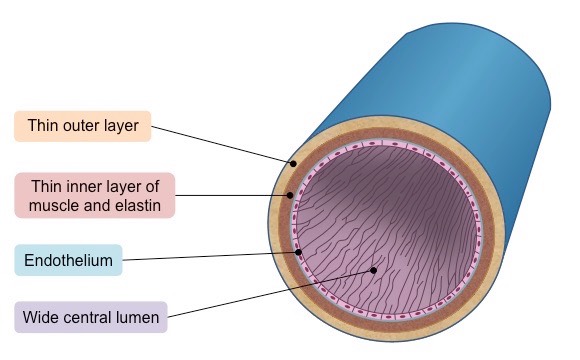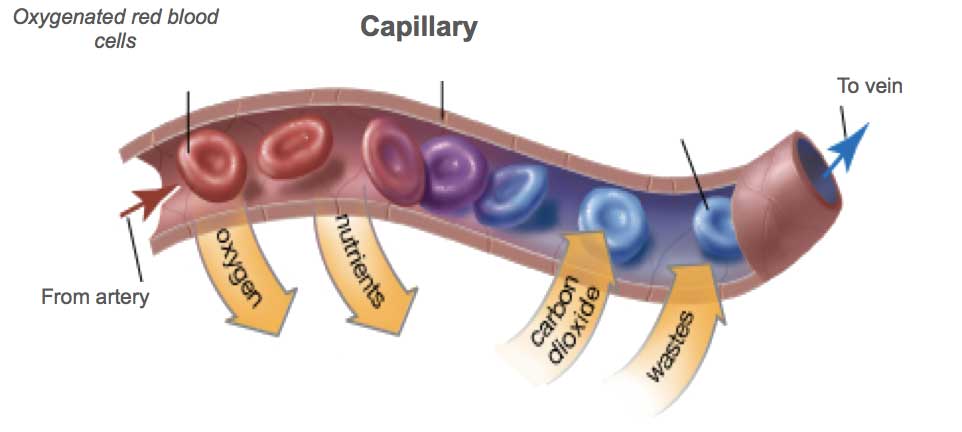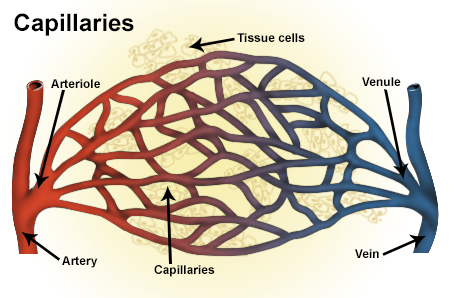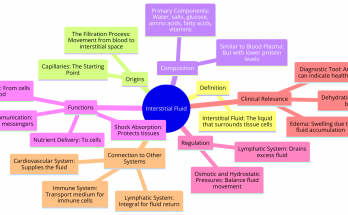Blood Vessels
The tubes (or pipes) through which the blood flows are called Blood vessels.
What are the 3 Types of Blood Vessels
There are three main types of blood vessels involved in blood circulation
Also Check – 7 Structural and Functional Difference Between Arteries Veins and Capillaries
These all 3 Vessels are connected to form one continuous closed system.
Arteries

Characteristics of Arteries
They have thick muscular and elastic walls to withstand the high pressure of the blood emerging from the heart.
They do not have valves.
Also Check – 15 Important Differences Between Arteries and Veins
Veins

Characteristics of Veins
They have thin valves than the arteries and carry blood at low pressure.
Have valves to prevent the backflow of blood to maintain uni directional flow.
.
Capillaries

Characteristics of Capillaries
Artery divides into smaller vessels known as capillaries on reaching an organ or tissue.
The walls of capillaries are one cell thick.
They also have valves to prevent the backflow of blood.
Also Check – Transportation in Human Beings
7 Important Functions of Blood Vessels -Arteries, Veins and Capillaries
- Arteries carry oxygenated blood from the heart to various organs of the body except palmonary artery.
- Veins collect the deoxygenated blood from different organs of the body and bring it back to the heart except pulmonary vein.
- Capillaries allow outward diffusion of oxygen into the intercellular fluid and from there into the tissue cells.
- Capillaries allow inward diffusion of carbon dioxide from the intercellular fluid.
- Capillaries allow inward and outward diffusion of substances like glucose, amino acids, urea, hormones, etc.
- Capillaries allow leukocytes (WBCs) to squeeze out through the capillary walls by means of amoeboid movement.
- Capillaries help in exchange of materials between blood and surrounding cells that takes place across the thin walls of capillaries.


15 Comments on “Types and Functions of Blood Vessels Class 10”